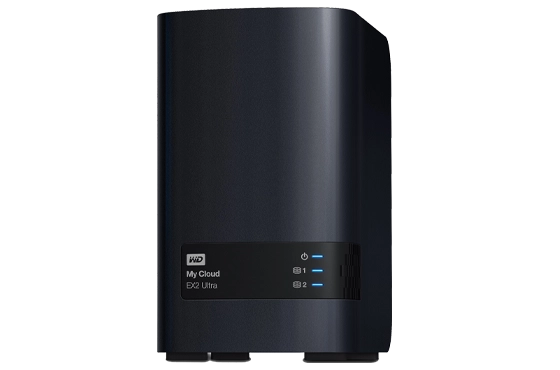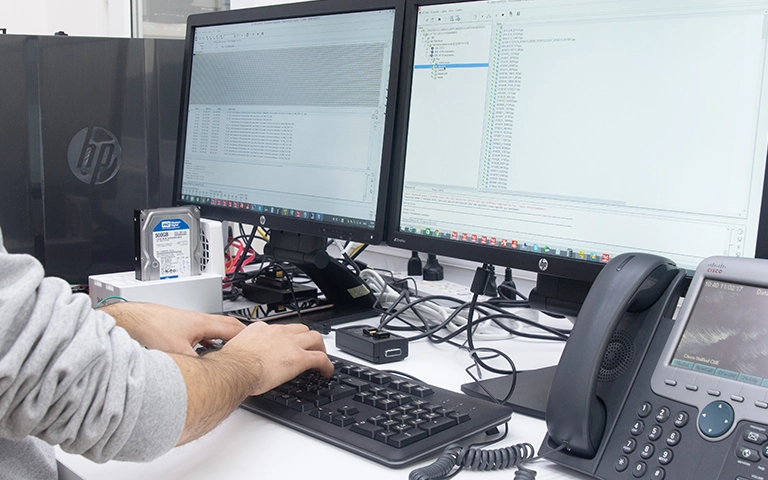The WD My Cloud EX2 Ultra is a popular two-bay NAS system designed for small offices and advanced home users. It offers centralized storage with automatic backup, cloud access, and RAID configurations (typically RAID 0 or RAID 1).
However, when hardware issues or improper rebuilds occur, recovering data from a WD EX2 Ultra requires professional expertise.
In this case, our engineers at RAID Recovery Services successfully restored a client’s data after the device failed to mount due to both RAID degradation and file system corruption.

Case Background: WD EX2 Ultra Not Mounting
A client contacted us after their WD My Cloud EX2 Ultra device became unresponsive and refused to mount shared folders. The system showed a red LED status on boot, and the web interface displayed an error message: “Volume Degraded – Data at Risk.”
The NAS was set up in RAID 1 (mirrored) mode using two 6TB WD Red drives. The client stored:
Business documents
Family photos and videos
Adobe project files
Bookkeeping records
They attempted to access the drives by connecting them to a Windows PC using a SATA dock, but the system could not read the drives. At that point, they sent the entire NAS, including the enclosure and both drives to RAID Recovery Services for evaluation.
If you’re experiencing a similar issue with a mirrored RAID configuration, visit our RAID 1 data recovery service page to learn how we can assist.
Understanding WD EX2 Ultra and Its Architecture
The WD My Cloud EX2 Ultra uses a custom Linux-based operating system (BusyBox variant), and by default, formats internal drives with an EXT4 file system on a mdadm-managed software RAID.
Some key technical characteristics include:
Hardware RAID management is limited, most logic is handled by the firmware
A proprietary partition structure, including multiple swap and data partitions
Encrypted cloud-based configuration files stored on internal memory
These factors make data recovery more complex when the NAS fails and RAID parity or the filesystem becomes corrupted.

Initial Evaluation: RAID Degraded with Filesystem Damage
Upon receiving the NAS, our engineers completed the following:
Drive Imaging: Both 6TB drives were cloned using forensic imaging tools to avoid additional wear or data loss.
SMART Diagnostics: One of the drives showed a rising reallocated sector count and signs of early degradation.
RAID Analysis: The RAID metadata was still intact, but the mirror was no longer synchronized due to inconsistencies caused by read errors and a failed rebuild attempt.
Our team confirmed that the volume could not be safely reconstructed using standard RAID assembly due to file system-level issues on both drives.
For more information on how we handle complex NAS failures like this, explore our dedicated NAS data recovery services.
Fast turnaround times for business-critical data
Recovery Strategy: Safe Reconstruction and Data Extraction
Using metadata from both cloned drives, we manually reconstructed the RAID 1 array in a virtual environment to ensure data consistency. We chose the more intact disk image as the reference and aligned the mirror accordingly.
The EXT4 file system showed multiple journal errors and corruption in the inode table. Using Linux-native tools and our proprietary recovery scripts, we repaired superblocks, directory structures, and recovered orphaned file clusters.
Once the file system was stabilized, we extracted user data to a secure recovery environment. Files included:
200+ GB of personal media files
Accounting software exports (QuickBooks and Excel)
Project folders containing PSD, INDD, and MP4 files
Encrypted vault and backup folders

Verification and Delivery
A remote file verification session was conducted with the client. They confirmed:
Folder structure was intact
All recent project files were present
No visible corruption in video or document files
The full recovery set was transferred to a new encrypted 8TB external drive and securely shipped to the client with tracking and handling instructions.
Recovery Summary
Device: WD My Cloud EX2 Ultra
RAID Type: RAID 1 (2 x 6TB)
Issue: Drive degradation, failed rebuild, EXT4 corruption
Recovery Time: 3 business days (expedited service)
Success Rate: 100% of user-requested data recovered
Trust the experts with proven results
Best Practices for WD My Cloud EX2 Ultra Users
To avoid future data loss:
Regularly back up data externally (WD My Cloud is not a true backup, just a centralized storage point)
Do not attempt rebuilds without verifying the health of both drives
Monitor SMART attributes regularly through the WD dashboard or third-party software
Use a UPS (uninterruptible power supply) to prevent power-related file system corruption
Avoid force-removing drives from a degraded volume
Attempting a rebuild without proper diagnostics can lead to irreversible data loss. Review our detailed guide on the dangers of rebuilding a RAID array on your own before taking action.

Need Help with WD NAS Recovery?
If your WD EX2 Ultra or other My Cloud NAS system has failed, do not attempt to rebuild or reinitialize the volume.
Contact RAID Recovery Services for a risk-free evaluation. We specialize in recovering data from WD devices, RAID arrays, and corrupted file systems.
Our experts are equipped to handle even the most critical NAS data loss scenarios.